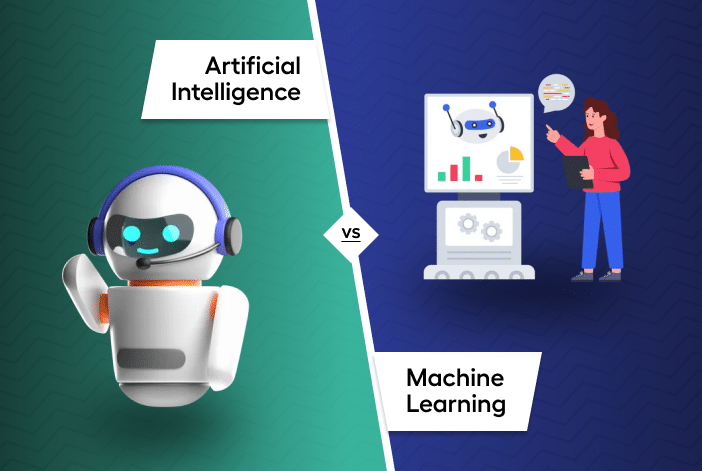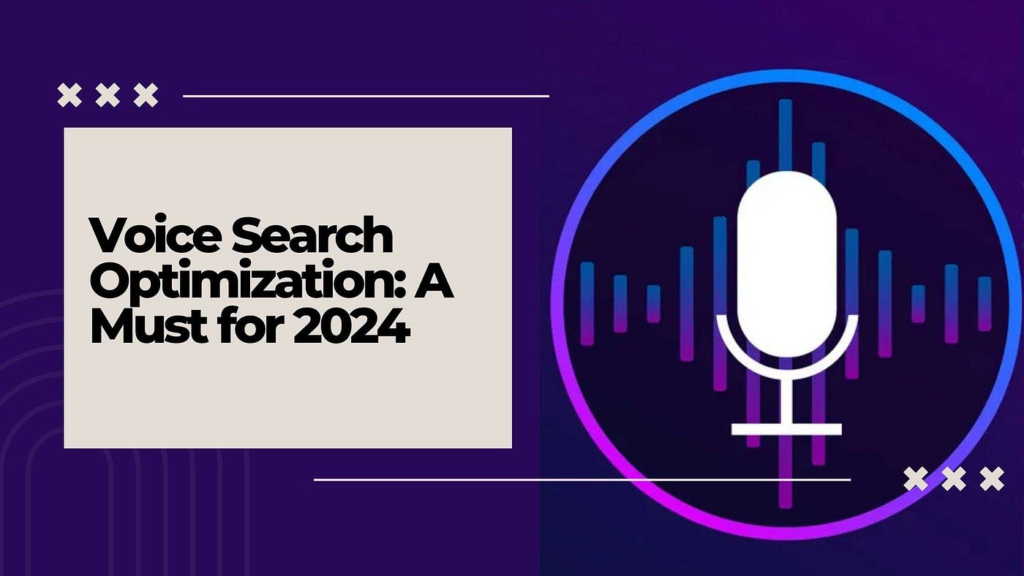
Marketing technology trends pertain to the dynamic approaches, instruments, and methods marketers employ to accomplish their objectives in a progressively digital and data-centric environment. Additionally, these trends include advancements in data analytics and consumer behavior, which affect how businesses attract, interact with, and retain clients. Therefore, in an evolving marketing technology trends ecosystem, staying abreast of these trends enables marketers to modify their approaches, seize new opportunities, and maintain their competitive edge.
In this blog post, we will explore eight superb Marketing Technology trends that have the potential to skyrocket your marketing efforts and propel your business to number one.
Understanding MarTech
Marketing Technology, known as MarTech, refers to using technology and software tools to enhance marketing efforts. It encompasses many technologies that help businesses optimize marketing technology trends and strategies, streamline processes, and drive better results.
Artificial Intelligence (AI) and Machine Learning (ML)

The Role of AI in Personalization and Automation
AI’s deep potential is increasingly being harnessed. One of its most noteworthy strengths is its capacity to handle and evaluate enormous datasets, which gives marketers profound insights into consumer preferences and behaviors. This abundance of data enables artificial intelligence (AI) to create highly customized content, offers, and recommendations that improve the customer experience.
AI’s ability to automate tedious and repetitive jobs is a major marketing technology trend advantage. Automation accelerates processes, freeing marketing experts from repetitive tasks so they can concentrate on more strategic projects and innovative campaigns.
How ML is Transforming Data Analysis
ML, a subset of AI, significantly shifts data processing by streamlining and automating it. In contrast to human analysis, machine learning algorithms can quickly and accurately search through massive databases. Because of their skill, marketers can identify complex patterns and trends that may be difficult for humans to see, giving them a more nuanced view of consumer behavior and market dynamics.
The influence of machine learning on segmentation, targeting, and predictive analytics is one advantage of incorporating it into the Marketing technology stack. More precise and sophisticated targeting techniques are made possible by ML algorithms’ abilityalgorithms’audiences according to complex parameters dynamically. Predictive analytics is made possible by machine learning (ML), which makes use of historical data to help marketers predict future trends, customer preferences, and potential outcomes more accurately. Because of this insight, marketers can proactively optimize their methods and increase overall marketing performance.
Furthermore, because machine learning is iterative, these algorithms may constantly learn from and adjust to shifting market conditions. This flexibility is especially useful in a setting where customer tastes and behaviors are ever-changing.
Pro Tip: AI may help streamline many tasks, but it’s not foolproof. It’s it requires some human attention. For example, AI-generated content can produce inaccurate and outdated information. Always fact-check it before posting it on your website or marketing channels.
Conversational Marketing and Chatbots

Enhancing Customer Engagement Through Real-Time Conversations
Conversational marketing encourages two-way, real-time conversations with customers, a paradigm change in consumer involvement. Instead of conventional one-way marketing funnels, conversational marketing establishes a dynamic dialogue that enables companies to develop more meaningful and individualized connections with their audience.
The Evolution and Impact of Chatbots in Marketing
Chatbots have greatly aided the development of conversational marketing trends. These clever bots provide real-time individualized product recommendations and round-the-clock client support. Additionally, these intelligent bots expand their functions to help with transactions, giving clients a smooth and effective way to interact with a business. By providing immediate, customized solutions, incorporating chatbots into the marketing plan enhances the overall client journey while increasing operational efficiency.
Chatbots have advanced in sophistication as AI capabilities have increased. Modern chatbots are skilled at comprehending real language, picking up knowledge from user interactions, and responding in a way that nearly resembles dialogue with a human. Because they rose
sophistication, chatbots are now seen as indispensable tools in contemporary marketing, greatly raising client happiness and boosting conversion rates.
Pro Tip: Look for tools with sophisticated Natural Language Processing (NLP) capabilities. With NLP, your chatbot can comprehend user inquiries and reply in a human-like, conversational way. It also helps manage variances in user input efficiently.
Voice Search Optimization

The Rising Importance of Voice Search in SEO Strategies
Voice search is becoming increasingly a trend that marketers should pay attention to (Digital Technology Service On Demand, 2024). It is no longer just a novelty. People’s methods for collecting information are evolving as more and more users use voice-activated gadgets like Google Home and Amazon Echo. Thus, SEO tactics also need to change. Marketers’ technoloMarketers’must know the differences between voice and typed searches to tailor their content.
Adapting Content for Voice-Activated Searches
To address this trend effectively, marketers are advised to prioritize using long-tail keywords and adopt a more natural language tone in their content development. Long-tail keywords are more likely to surface content in response to complex, context-rich queries because they match the specificity of voice queries.
Frequently Asked Questions (FAQs) are also a tactical weapon in the content optimization armory for voice searches. Since many voice inquiries are naturally in the form of questions, organizing material around thorough FAQs immediately responds to user inquiries. It fits in with the conversational style of voice interactions.
Pro Tip: Many voice searches, like “near me” inquiries, are location-based. Make sure that the information about your company on Google My Business is correct and current. This will increase the likelihood that your company will show up in local voice search results.
Augmented Reality (AR) in Marketing
Immersive Brand Experiences Through AR
Another technological advancement in marketing is augmented reality (AR) (Digital Technology Service On Demand, 2024). Augmented reality (AR) creates immersive experiences that can bring things to life by superimposing digital information over the actual world. This gives marketers fascinating new avenues for customer engagement. With augmented reality (AR), you may enhance your brand by providing a distinctive and interactive experience, such as virtually putting on items or showcasing furniture in your house.
Case Studies of AR in Product Visualization and Trials
Many brands are already using AR to great impact. Notable instances include IKEA’s cutting-edgIKEA reality app, which lets users virtually see furniture in their homes before purchasing. This software gives customers a concrete idea of how things integrate into their living spaces and bridges the gap between online shopping and in-store experiences.
The Virtual Artist program at Sephora is yet another excellent example of AR integration. This technology allows users to try on several makeup styles virtually, providing a customized and engaging experience. Sephora makes it easier for customers to explore and make decisions by allowing them to test out various products virtually, making the buying experience more enjoyable and well-informed.
These applications highlight augmented reality’s potentiareality’sore more than just a toy and give users useful tools. Incorporating augmented reality (AR) into the purchasing process allows firms to stand out from the competition and meet the changing demands of tech-savvy customers. Consumer confidence is greatly influenced by the ability to virtually try on things or see them in real-world settings before making a purchase, which results in more confident and informed purchasing decisions.
Blockchain for Transparency and Security
Blockchain’s PotenBlockchain’slutionize Consumer Trust
Blockchain has important ramifications for marketing in addition to cryptocurrency. Blockchain is mostly about security and openness. It can offer an immutable and transparent decentralized record of transactions. This might be a game-changer for consumers who are becoming increasingly concerned about trust and privacy. Businesses that use blockchain technology may obtain a competitive advantage by increasing consumer trust.
Applications of Blockchain in Ad Fraud Prevention
Blockchain technology has the potential to address ad fraud, a significant obstacle in the field of digital marketing. Blockchain offers safe and unchangeable record-keeping of ad transactions by utilizing a tamper-proof distributed ledger, which lowers the chance of fraud.
Smart contracts minimize fraudulent activity and carry out predetermined conditions by automating verification procedures. Blockchain improves identity verification, stops domain spoofing and ad stacking, and increases supply chain transparency for advertising.
Furthermore, token-based incentives and decentralized ad verification encourage honest behavior, while real-time monitoring aids in detecting abnormalities. Because of its immutability, the technology offers an auditable trail for post-event analysis, which helps
to build a reliable and effective digital advertising environment. Blockchain can, therefore, assist advertisers in confirming that actual individuals, not bots, are seeing their advertisements. This may result in increased return on investment (ROI) and more effective use of advertising dollars.
Pro Tip: Use BI’s predictive analytics feature to predict future market trends and customer behavior. Use this data to inform inventory control and product development.
Privacy-Focused Marketing in a Cookieless World
Shifts in Data Collection and Targeting Methods
Marketers must reconsider their data-collecting and targeting strategies in light of evolving privacy concerns and modifications to data legislation (Digital Technology Service On Demand, 2024). As third-party cookies are gradually being phased out, marketers will need to prioritize first-party data and devise new strategies for providing personalized experiences without sacrificing privacy.
Preparing for Changes in Privacy Regulations
Businesses need to be aware of these changes and ready as privacy laws continue to change. This entails being aware of the consequences of laws such as the California Consumer Privacy Act (CCPA) and the General Data Protection Regulation (GDPR) and ensuring your marketing strategies adhere to them. MarTech tools are going to be essential for this. For instance, consent Management Platforms (CMPs) make it easier to handle user preferences and consents openly and transparently while guaranteeing compliance with the laws above.
MarTech solutions also facilitate advanced audience segmentation, allowing companies to ethically target their marketing campaigns and avoid privacy infringement. Features like data anonymization, encryption, and AI-powered compliance audits can help protect sensitive client information and spot possible privacy issues. These platforms also offer cross-channel data governance and dynamic consent management, which enable enterprises to adjust to changes in privacy regulations quickly.
Pro Tip: Only gather the information required for your marketing campaigns. Do not save extraneous information in storage. The less data you gather, the less you have to secure.
The Growth of Video Marketing
The Dominance of Video Content on Social Platforms
Video content has become the most popular type of media on social media platforms (Digital Technology Service On Demand, 2024). Video is all the rage, whether on TikTok for short videos, Instagram for live streaming, or YouTube for interesting stuff. According to surveys, Consumers are more inclined to interact with video material than any other kind of content. This offers marketers a fantastic chance to establish a distinctive and compelling connection with their audience.
Best Practices for Integrating Video into Your Marketing Strategy
When integrating video into your marketing technology trends strategy, careful preparation and execution are necessary. Precise objectives and target demographics must be established to ensure that video material appeals to the target audience. Videos should be brief and interesting because viewers’ attention spans are short.
Reach is maximized by ideal distribution across several channels, such as websites, email marketing, and social media. Brand recognition and loyalty are increased by using powerful narrative tactics and integrating brand identity consistently across videos. Given the widespread use of mobile devices for video watching, prioritizing mobile optimization is imperative. Continuous improvement is made possible by routinely monitoring and evaluating video performance data, guaranteeing that the material will always be pertinent and useful within the larger marketing plan.
Additionally, because of the popularity of shoppable and interactive video formats, there are even more opportunities to increase engagement and conversions. By being aware of these best practices, you may use video to its full potential and accomplish your marketing objectives.
Concluding Remarks
The MarTech scene is changing quickly as we go toward 2024. Future marketing trends include AI and ML, voice search, AR, blockchain, conversational marketing, privacy-focused marketing, and video content.
Source: Zipdo
Accepting innovation in marketing is about more than remaining current; it’s also about seizing fresh chances for expansion and uniqueness. By keeping up with the most recent developments in the MarTech space, businesses may establish themselves as leaders in the field and forge closer bonds with their target audience. Let’s seize these’ opportunities’ as we enter the new year.
Key Takeaways on the Latest Marketing Technology Trends
Utilizing marketing technology may enable you to differentiate your digital marketing initiatives from those of your rivals. It enables you to deliver individualized experiences and establish stronger connections with your audience.
Technology for marketing has many benefits, but there are also drawbacks. These include the necessity for clean data and the quick development of new technologies.
Marketing technology is more than a fad. It is a cornerstone of contemporary marketing. Adopting marketing technology can transform your marketing efforts and make you successful.
Uncertain about where to begin putting these technological advances in marketing? Allow us to assist! Just schedule a free consultation to get professional advice on what technology would work best with your current plan.
